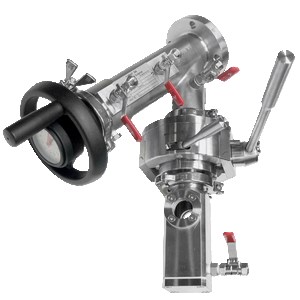Article by Michel F. Bolle
___
___
In this article, an overview of the most prominent valve failures is given as well as possible ways to prevent or reduce the frequency of such problems. Admittedly, it is a very broad subject. There are so many different valve types, applications, and processes that there would be enough material to write a book about it!
In any case, and regardless the application, many valve users experience similar problems. While talking about valve failures we naturally think about seat leakage, packing leakage or a valve getting blocked in the open or closed position. These problems often occur with standard, off the shelf valves and far less with engineered or bespoke valves. Here it is very important to understand that such failures are, in many cases, the consequence of errors made long before the valve started to leak. In my 25 years of visiting power plants and refineries all over the globe, one thing has become clear: in more than 80% of cases, the valves have been wrongly selected at the beginning of a project.
Knowledge gap
The reasons for wrong valve selections are various: missing or insufficient knowledge, copying & pasting from previous projects, choosing the cheapest solution, missing process data, to just mention a few. The first two factors are more or less the result of the previous departure of older technical experts in the industry. In several sectors, most notably oil and gas, companies have cut their workforce drastically. As a result, a lot of knowhow has disappeared with them.
Now that the economy is doing better, the younger technical experts in general do not have the same knowhow and especially the experience, which is not a surprise. Because of this knowledge gap, projects are often executed by using the copy & paste method. That’s where mistakes are being made. For example, the material selection depends on the geographical location. A project in a subtropical climate has other demands than in near-Artic conditions. If the material specifications are not changed accordingly, (valve) failures are bound to happen.
Focus on cost
The impact from processing media on the material is also a factor that in more than 4 out of 5 cases leads to valve failures due to corrosion. A very common problem I’ve encountered many times, is the use of epoxy coated air relief and vacuum breaker valves on sea water applications. Without doubt a high-quality epoxy coating in combination with carbon steel is a good solution, but the slightest damage on the coating, which often occurs during installation, will lead to corrosion.
Aluminum bronze valves on sea water applications have resolved many problems. End users’ focus on cost hasn’t helped in eliminating valve failures either. By choosing valves that are 30% or even 40% below the market average, one cannot expect the same quality and longevity as from highend suppliers. Most of these rock bottom priced products are designed and manufactured to last until the end of the warranty period, which is usually two years.
More active role
In conclusion, the easiest way to reduce valve failure is to select the right valve for the given application and process conditions. This sounds easy, but as I have explained, it is far from it. Suppliers of valves and actuators could and should play a more active role to assist customers with technical information and advice, and if needed, to steer them in the right direction when selecting valves. In some cases, it might even be better to not take a job, rather than being in big trouble a few months later because the valves are failing.
The selection process is very important but not the be-all and end-all. Installation, operation and maintenance are equally important and often not conducted according to suppliers’ specifications. For example, over the years I have been involved in so many cases of failures of swing check valves. It is hard to believe, but sometimes the valves have been installed upside down or in the wrong direction. Another very common installation problem with check valves is that there should be a certain distance from a pipe elbow to the valve, or from a pump outlet to the valve. This is to prevent turbulences, which will ultimately render the check valve useless.
Better communication
It is my firm conviction that the communication from suppliers to end users can be improved to prevent common mistakes such as the installation of (swing) check valves. Easy to understand, but technically precise Installation, Maintenance and Operating manuals should be a standard for all of us. I notice that in the US, these manuals are better structured and more clear for end users. Maybe it is because of liability issues, but the end result in this case is more important, namely to instruct in a clear, concise manner. It doesn’t help if critical information is ‘buried’ somewhere in a 500 page manual.
Last but not least, offering training courses (online and offline) is definitely an option that could reduce valve failure. There are several suppliers, including Famat, or other organizations, such as KCI Publishing, who are active in this field. Finally, it should be noted that, even with a correctly selected valve, that every elastomer, seat, gasket, ball, etc. has a life cycle. Considering the difficulty of the application (for example high temperatures/pressures, abrasive mediums, high velocities) the failure of these parts after a certain time of use can be considered as “normal”. The only way to extend the life-cycle is to choose high quality materials and more specific technical solutions, which unfortunately will have an important impact on the cost.
Origins of valve failures Valve failures often are a result of:
– wear of the elastomers, seats, seals, and gaskets
– wear of the valve stem
The above wear and tear can be the cause of:
– cavitation
– temperatures or pressures outside the designed operating parameters, especially unexpected pressure peaks in the pipeline (common error made is to design valves to operating conditions and not design conditions)
– wrongly chosen actuators (for example to much force on the seat while closing)
– foreign debris in the pipeline (for example insufficient Blow-Out after welding, or missing filters)
– material incompatibility with the product being processed
– incorrect assembly, installation, or maintenance procedures performed on valve




